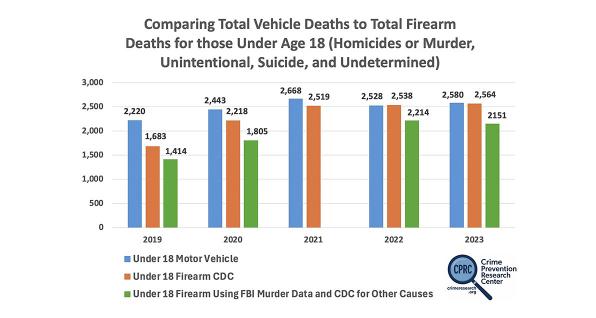We actually have one of, if not the, largest known deposits of these strategic minerals right here in the U.S. We’ve just been too politically lazy, letting the foreign controlled econutz and business owners overly motivated by the bottom line to develop the mining
China’s New Weapon Isn’t a Missile. It’s a Magnet.
On April 4, the Chinese government issued sweeping new export controls on critical rare earth elements in response to the Trump Administration’s reciprocal trade plan. And while the categories of rare earths included — samarium, gadolinium, terbium, dysprosium, lutetium, scandium, and yttrium — are unknown to most Americans, they are embedded in everything from smartphones to stealth bombers.
These new restrictions are not just a new volley in the ongoing back-and-forth between Washington and Beijing. For those paying attention, this is a strategic maneuver that puts pressure directly on the backbone of U.S. national defense and the broader high-tech economy.
While the move is couched in the language of national security and non-proliferation compliance, its timing and scope are not accidental. China is leveraging its near-total dominance over the global rare earth supply chain to shape geopolitical outcomes and force the U.S. to respond.
To better understand the government’s options, it’s helpful to know more about what these rare earth elements do. Dysprosium and terbium are used to produce high-temperature-resistant magnets essential for electric motors in guided missiles, aircraft, drones, and naval propulsion systems. Samarium-cobalt magnets power everything from F-35 jet actuators to targeting systems. Gadolinium is a key component in military-grade sonar. Scandium-aluminum alloys reduce weight while maintaining strength in aerospace structures. Lutetium is increasingly used in advanced radiation detection and positron emission tomography (PET) systems.
These are not luxury materials. They are irreplaceable components in mission-critical systems. It is impossible to build an advanced hypersonic glide vehicle, a submarine-launched cruise missile, or a battlefield drone swarm without them.
China dominates the pipeline for these materials entering the rest of the world, controlling approximately 70 – 85% of their global production and processing capacity. In many cases, such as with dysprosium and terbium, China is not just the dominant supplier, it is the only economically viable one.
The implications of the new restrictions extend far beyond defense. These same elements are foundational to industries that define modern civilization: consumer electronics, factory automation and robotics, health care, electric and hybrid vehicles, wind turbines, medical imaging, semiconductors, appliances, and more. Now Beijing is threatening to block them from those it considers its adversaries.
China has a history of leveraging their advantage in this sector. In 2010, China restricted rare earth exports during a territorial dispute with Japan. In 2023, it imposed curbs on gallium, germanium, and graphite (important in semiconductor production) in response to U.S. chip export bans. Last year, it strengthened restrictions on gallium and germanium and added antinomy and superhard materials.
This latest move is most expansive yet. It targets a broader array of elements, and the regulatory language is sweeping, covering metals, oxides, alloys, compounds, magnets, and even mixed-material targets used in thin-film manufacturing. China is proving that it is willing to endure economic blowback to assert long-term strategic control, and as tensions with the U.S. rise, the boundaries of a new materials Cold War are being drawn.
The Trump Administration is watching this carefully and has already begun taking aggressive steps toward putting the U.S. in a greater position of rare earth and critical mineral self-sufficiency. But American progress in this area over the past 20 years has been sluggish. Building rare earth processing plants is capital-intensive and geopolitically challenging.
Fortunately, the U.S. can access its own rare earth resources within its borders. The Mountain Pass deposit in California is now scaling up production, although it still sends a substantial amount of its mined ore to China for processing. It also largely lacks the heavy rare earths dysprosium and terbium. Another very large resource, located in Nebraska, can produce these defense-critical rare earths in additional to establishing global U.S. dominance in production of the rare earth scandium. That project could move to construction immediately, given adequate financing.
But China’s dominance in midstream processing, the chemical separation and purification that turns mined rock into usable materials, remains unrivaled.
To address this challenge, the U.S. must treat rare earth independence not as an industrial policy footnote but as a core national security imperative. That means accelerated investment in mining, extraction, refining, and recycling capacity, all backed by government dollars, loans and loan guarantees, and streamlined permitting. Importantly, as President Trump’s recent Critical Minerals Executive Order proposes, the Defense Production Act should be fully leveraged to jumpstart rare earth projects on U.S. soil.
Further, any domestic investment must be met with greater cooperation between Washington and allied nations that can counter China’s monopoly. Japan, South Korea, Canada, and Australia should be part of a coordinated, supply-secure bloc for critical materials.
The wars of the future may not start with missiles, but with minerals. And unless the U.S. invests in securing access to the elements that power our technologies, we may soon find ourselves on the wrong side of a digital and defense divide.










